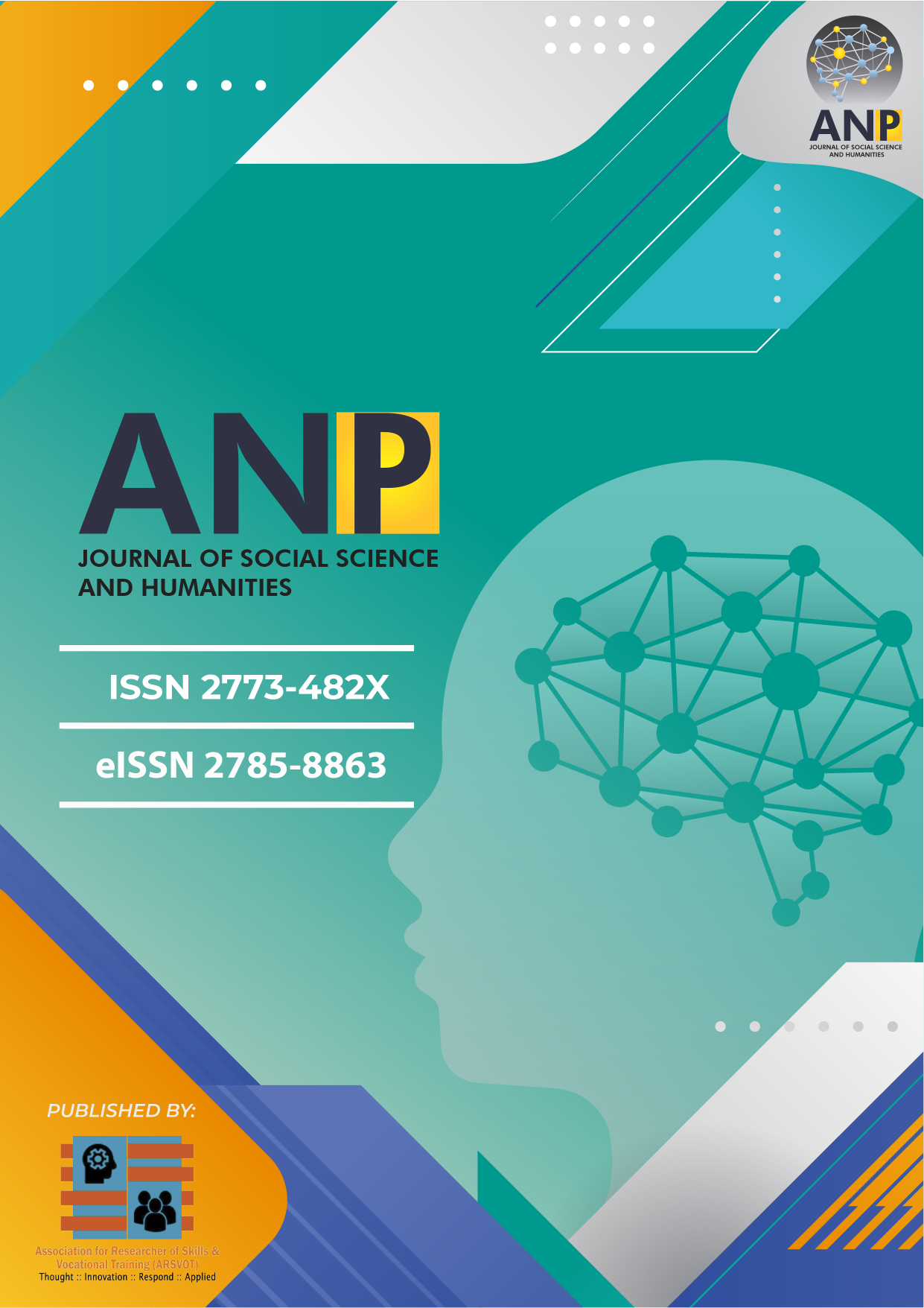Readiness of Construction Organizations Towards Industrial Revolution 4.0 (IR 4.0)
DOI:
https://doi.org/10.53797/anp.jssh.v3i1.4.2022Keywords:
Revolution industry 4.0, construction organization, readiness of IR4.0, challenge of IR4.0Abstract
Readiness of construction organization towards Industrial revolution 4.0 (IR4.0) is important to help the country achieve progress in the use of latest technology. However, lack of knowledge and readiness of the organization can make an organization to be left behind and will be left out of the arena that has highly competitive rivals. Therefore, this research is aims to identify the readiness of construction organizations for the IR 4.0 in Malaysia and identify the challenges of construction organizations in heading towards the IR 4.0. This research was conducted using a survey design. Research data were analyzed descriptively on a sample representing the entire study population. The sampling technique chosen in this study is a simple random sampling. Questionnaires were used as a major instrument to collect the data. This study involved a total of 51 workers from construction organization comprising government agencies, developers, consultants, surveyors and contractors from few states in Malaysia. All data from the questionnaire were analyzed to obtain frequency, percentages, mean scores, and standard deviations. The findings of this research found that readiness of construction organizations for the IR 4.0 was excellent. More than half of the workers understand and well aware about IR 4.0. Nonetheless, it is found that the main challenge of construction organizations is the difficulty of using the latest technology, besides the high cost of the equipment and software. Therefore, this study is expected to provide useful input to construction organizations and in turn can increase the readiness and overcome the challenges faced by organizations to realization of IR 4.0 in Malaysia.
Downloads
References
Ardiny, H., Witwicki, S., & Mondada, F. (2015, October). Construction automation with autonomous mobile robots: A review. In 2015 3rd RSI International Conference on Robotics and Mechatronics (ICROM) (pp. 418-424). IEEE.
Bai, C., Dallasega, P., Orzes, G., & Sarkis, J. (2020). Industry 4.0 technologies assessment: A sustainability perspective. International journal of production economics, 229, 107776.
CIDB, (2020). IR 4.0 Dalam Pembinaan. Retrieved October 13, 2020, from https://www.cidb.gov.my/index.php/ms/maklumat-pembinaan/teknologi/ir40
Dharmawati, I. G. A. A. (2016). Hubungan tingkat pendidikan, umur, dan masa kerja dengan tingkat pengetahuan kesehatan gigi dan mulut pada guru penjaskes sd di Kecamatan Tampak Siring Gianyar. Jurnal Kesehatan Gigi (Dental Health Journal), 4(1), 1-5.
Ismail, Z. Z (2018). Cabaran Industri Pembinaan Di Malaysia Terhadap Revolusi Industri 4.0. Universiti Teknologi Malaysia.
Lee, L., Chen, D. T., Li, J. Y., & Lin, T. B. (2015). Understanding new media literacy: The development of a measuring instrument. Computers & Education, 85, 84-93.
Muhammad, B., Kumar, A., Cianca, E., & Lindgren, P. (2018, November). Improving port operations through the application of robotics and automation within the framework of shipping 4.0. In 2018 21st International Symposium on Wireless Personal Multimedia Communications (WPMC) (pp. 387-392). IEEE.
Maskuriy, R., Selamat, A., Ali, K. N., Maresova, P., & Krejcar, O. (2019). Industry 4.0 for the construction industry—How ready is the industry?. Applied Sciences, 9(14), 2819.
Oesterreich, T. D., & Teuteberg, F. (2016). Understanding the implications of digitisation and automation in the context of Industry 4.0: A triangulation approach and elements of a research agenda for the construction industry. Computers in industry, 83, 121-139.
Pereira, T., Barreto, L., & Amaral, A. (2017). Network and information security challenges within Industry 4.0 paradigm. Procedia manufacturing, 13, 1253-1260.
Phoon, G. C., Idris, M. Z., & Nugrahani, R. (2021). Virtual Reality (VR) in 21st. Century Education: The Opportunities and Challenges of Digital Learning in Classroom. Asian Pendidikan, 1(2), 105-110. https://doi.org/10.53797/aspen.v1i2.15.2021
Prasetyo, B., & Trisyanti, U. (2018). Revolusi industri 4.0 dan tantangan perubahan sosial. IPTEK Journal of Proceedings Series, (5), 22-27.
Roscoe Jr, A. M., Sheth, J. N., & Howel, W. (1975). Intertechnique Cross-Validation. New Marketing for Social and Economic Progress and Marketing's Contributions to the Firm and to the Society: 1974 Combined Proceedings, 8(36), 145.
Sabri, S., & Yahya, M. Y. (2020). Penggunaan Internet of Things (IoT) dalam Industri Pembinaan di Malaysia. Research in Management of Technology and Business, 1(1), 482-498.
Saraswati, P., & Ahmad Puad, F. N. (2020). Development of touristic village and creative industry in improving social welfare at Wukirsari Village, Imogiri, Bantul District. Asian Journal of Assessment in Teaching and Learning, 10(1), 87-97. https://doi.org/10.37134/ajatel.vol10.1.10.2020
Schwab, K., & Davis, N. (2018). Shaping the future of the fourth industrial revolution. Currency. United Kingdom: Penguin UK.
Schönbeck, P., Löfsjögård, M., & Ansell, A. (2020). Quantitative review of construction 4.0 technology presence in construction project research. Buildings, 10(10), 173.
Steiner, R., & Jornitz, M. (2017). Continuous processing in the pharmaceutical industry: status and perspective. Continuous Manufacturing of Pharmaceuticals, 369-403.
Stiles, S., Golightly, D., & Ryan, B. (2021). Impact of COVID‐19 on health and safety in the construction sector. Human Factors and Ergonomics in Manufacturing & Service Industries, 31(4), 425-437.
Sudirman, A., Muttaqin, M., Purba, R. A., Wirapraja, A., Abdillah, L. A., Fajrillah, F., ... & Simarmata, J. (2020). Sistem Informasi Manajemen. Yayasan Kita Menulis.
Tariq, B., & Rahim, R. A. (2016). The environmental effects of intra-industry trade in the SAARC region. International Journal of Business and Society, 17(1).
Tee, T. K., Ramlan, A., Azman, M. N. A., Bagus, N. R. P. A., Sukardi, Risfendra, & Abd Hamid, R. I. (2022). Mastery Issues and Teaching Approaches for the Electrical Technology Certificate Programme at Community Colleges on the Topic of Measuring Instruments. Asian Pendidikan, 2(1), 1-7. https://doi.org/10.53797/aspen.v2i1.1.2022
Downloads
Published
How to Cite
Issue
Section
License
Copyright (c) 2022 Yusmarwati Yusof, Ida Farhana Muhainy Morbe, Muhammad Faris Fatahol-Qarib, Rohayu Roddin, Marina Ibrahim Mukhtar

This work is licensed under a Creative Commons Attribution-NonCommercial-ShareAlike 4.0 International License.




